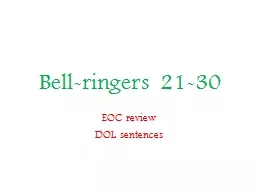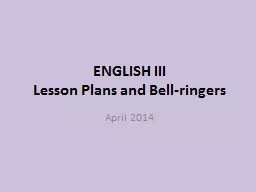PPT-Chapter 12 Section 4 Bell Ringer
Author : faustina-dinatale | Published Date : 2018-03-23
7 A public opinion poll in Ohio wants to determine whether registered voters in the state approve of a measure to ban smoking in all public areas The researchers
Presentation Embed Code
Download Presentation
Download Presentation The PPT/PDF document "Chapter 12 Section 4 Bell Ringer" is the property of its rightful owner. Permission is granted to download and print the materials on this website for personal, non-commercial use only, and to display it on your personal computer provided you do not modify the materials and that you retain all copyright notices contained in the materials. By downloading content from our website, you accept the terms of this agreement.
Chapter 12 Section 4 Bell Ringer: Transcript
Download Rules Of Document
"Chapter 12 Section 4 Bell Ringer"The content belongs to its owner. You may download and print it for personal use, without modification, and keep all copyright notices. By downloading, you agree to these terms.
Related Documents














